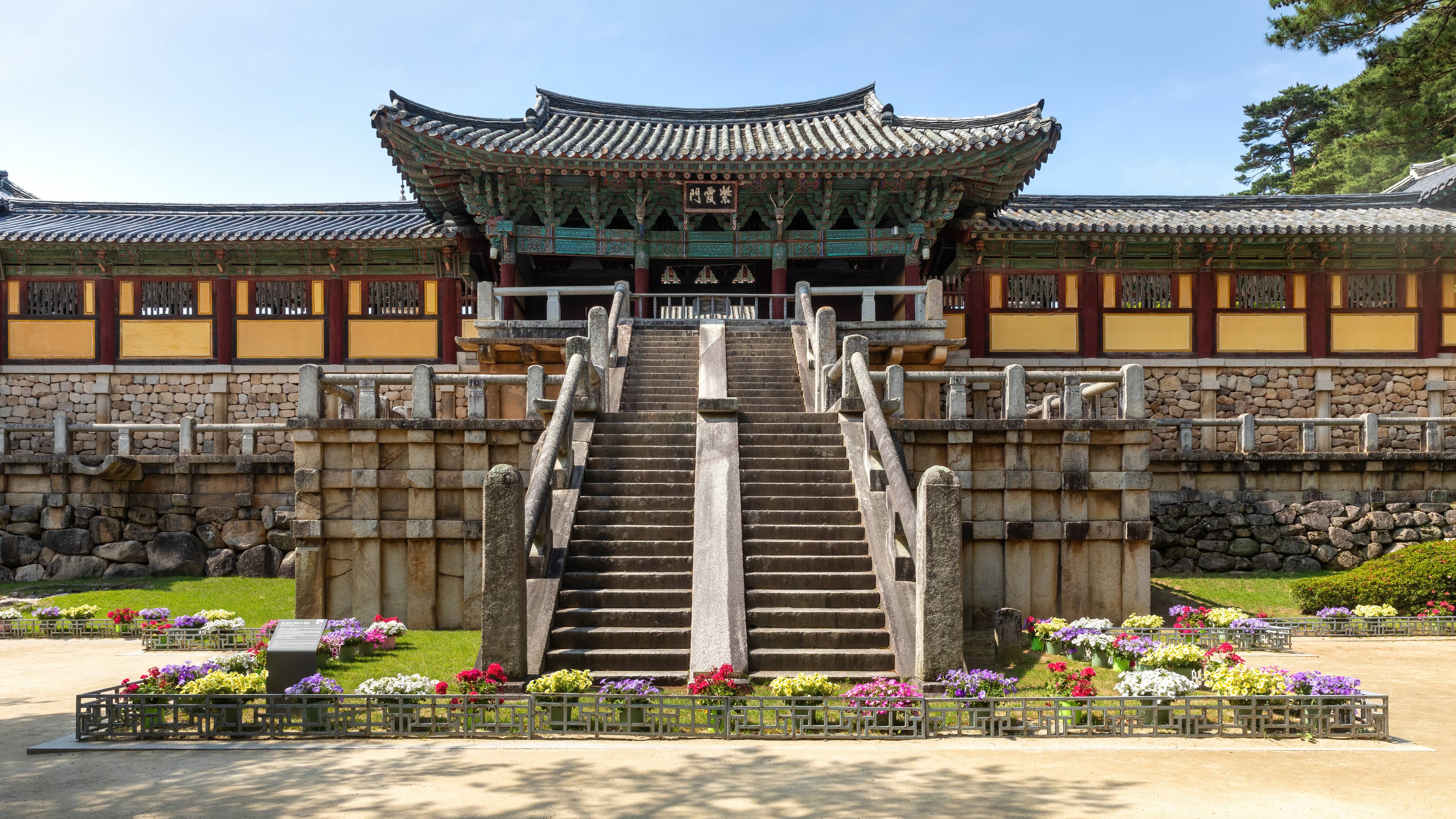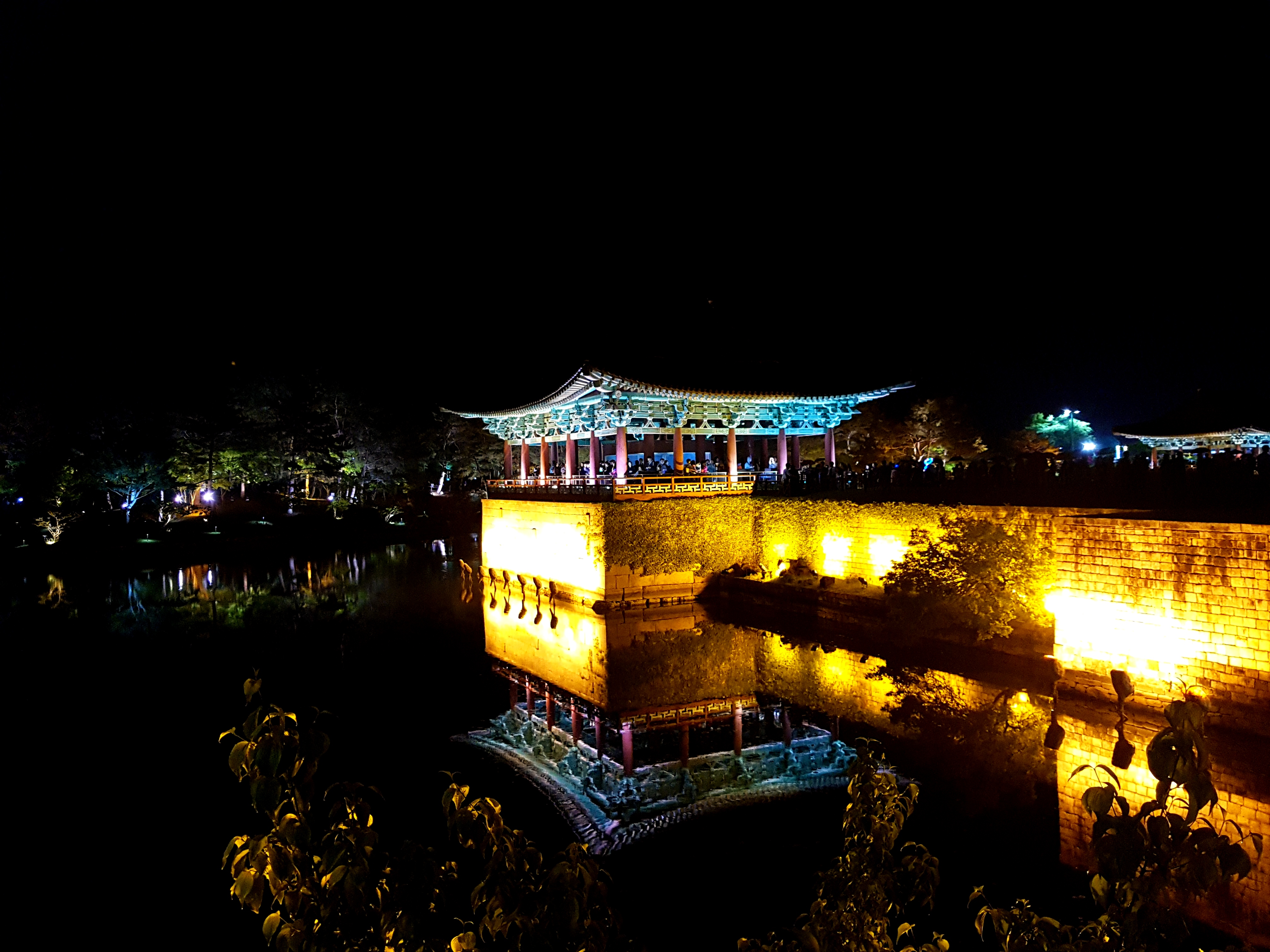Gyeongju Historic Areas
Gyeongju, the ancient capital of Silla, is a UNESCO World Heritage site offering a captivating journey through Korea's rich history with stunning temp...

Highlights
Must-see attractions

Social
From TikTok & Reddit
Best Time
Pleasant weather, beautiful blooms/foliage
Gyeongju Historic Areas
Best Time
Pleasant weather, beautiful blooms/foliage

Highlights
Must-see attractions
Gyeongju, the ancient capital of Silla, is a UNESCO World Heritage site offering a captivating journey through Korea's rich history with stunning temples, royal tombs, and serene landscapes.
"It is not super extraordinary, but it is just magical here and hard to explain."
⏳ Plan for 2-3 Days
Gyeongju's historical depth warrants more than a day trip. Allow ample time to soak in the ancient capital's charm.
🚶♀️ Walkable & Bikeable
Central sites are walkable. Renting an e-bike or scooter is a fun way to explore!
Highlights
Discover the most iconic attractions and experiences

Bulguksa Temple
South Korea, Gyeongju
A masterpiece of Silla Buddhist art, this UNESCO site boasts stunning architecture and serene courtyards.

Daereungwon Royal Tombs
Gyeongju Historic Areas
Explore ancient burial mounds, including the iconic Cheonmachong Tomb, offering a glimpse into Silla royalty.

Donggung Palace and Wolji Pond
Gyeongju Historic Areas
Experience the magical ambiance of this reconstructed palace and pond, especially enchanting when illuminated at night.

Cheomseongdae Observatory
Gyeongju Historic Areas
The oldest existing astronomical observatory in East Asia, a testament to Silla's scientific prowess.
Plans like a pro.
Thinks like you
Planning Your Visit
Embrace the Ancient Capital Vibe
Getting Around Gyeongju
Best Times
Insider Tips
from TikTok, Instagram & Reddit
⏳ Plan for 2-3 Days
Gyeongju's historical depth warrants more than a day trip. Allow ample time to soak in the ancient capital's charm.
🚶♀️ Walkable & Bikeable
Central sites are walkable. Renting an e-bike or scooter is a fun way to explore!
🌙 Nighttime Magic
Don't miss Donggung Palace and Wolji Pond after dark; it's beautifully illuminated.
🚌 Bus is Your Friend
Bus #10 connects many key attractions like Bulguksa Temple.
Tips
from all over the internet
⏳ Plan for 2-3 Days
Gyeongju's historical depth warrants more than a day trip. Allow ample time to soak in the ancient capital's charm.
🚶♀️ Walkable & Bikeable
Central sites are walkable. Renting an e-bike or scooter is a fun way to explore!
🌙 Nighttime Magic
Don't miss Donggung Palace and Wolji Pond after dark; it's beautifully illuminated.
🚌 Bus is Your Friend
Bus #10 connects many key attractions like Bulguksa Temple.
🌸 Pink Muhly Season
Visit in October for stunning pink muhly fields, often free to enter.
😋 Taste Gyeongju
Try local specialties like Gyeongju bread (sweet red bean pastry).
What Travellers Say
Reviews Summary
Visitors consistently praise Gyeongju for its unique, almost magical atmosphere and its deep historical significance as the ancient Silla capital. The city offers a captivating blend of ancient relics, beautiful natural landscapes, and charming traditional architecture, making it a highly recommended destination. Some travelers note that traffic can be an issue, and suggest budgeting at least one full day for exploration.
"We were happy to come to Gyeongju, as it is truly one of the nicest areas we visited in South Korea. There is a very special atmosphere in this area. It is not super extraordinary, but it is just magical here and hard to explain.
Come live it by yourself, you will surely love it!"
Fan
"worth going if you are around the area.
but traffic can be a killer.
budget one day for it.
but nice to see"
Colin
"Nice area"
Gary O’Connor
What People Like
What People Dislike
Frequently Asked Questions
🚇 🗺️ Getting There
The easiest way is by KTX high-speed train from Seoul Station to Singyeongju Station, which takes about 2 hours. Alternatively, intercity buses are available and can be a more budget-friendly option.
Yes, Gyeongju is very accessible by public transport. The main historical sites in the city center are within walking distance, and buses connect to further attractions like Bulguksa Temple.
Absolutely! Many travelers find Gyeongju perfectly navigable without a car. The central historical areas are concentrated and walkable, and buses are readily available for sites like Bulguksa.
You can take a local bus or a taxi from Singyeongju KTX station to the city center. Some Reddit users noted that taxis might have a surcharge for this route.
The KTX train is a quick option, with Gyeongju being two stops before Busan. Intercity buses are also a convenient and frequent choice.
🎫 🎫 Tickets & Entry
Many sites, like Daereungwon Royal Tombs and Cheomseongdae Observatory, have small entrance fees. Bulguksa Temple also requires admission. Some areas, like parts of the Hanok Village, are free to wander.
Generally, advance booking isn't required for most historical sites. You can purchase tickets upon arrival. However, for special events or festivals, checking ahead is advisable.
Opening hours vary by site, but most historical attractions are open from morning until early evening. Donggung Palace and Wolji Pond are particularly popular for nighttime visits.
Yes, some areas like the Seongdong Market and parts of the Hanok Village are free to explore. Pink muhly fields in October are also often free to enter.
While not explicitly mentioned, purchasing individual tickets is common. It's worth checking at the visitor centers for any potential day passes or bundled options.
🎫 🧭 Onsite Experience
Key sites include Bulguksa Temple, Daereungwon Royal Tombs (with Cheonmachong Tomb), Donggung Palace and Wolji Pond, and Cheomseongdae Observatory.
Gyeongju is considered the 'museum without walls' and is a must-visit for history enthusiasts, being the ancient capital of the Silla Kingdom.
Donggung Palace and Wolji Pond are beautifully illuminated at night, offering a magical experience. The city also has a charming atmosphere for evening strolls.
Yes, renting e-bikes, scooters, or even golf carts is a popular and convenient way to explore the historic areas.
While not always necessary due to clear signage and walkable areas, self-guided audio tours are available at museums. Some visitors opt for organized tours for deeper insights.
🍽️ 🍽️ Food & Dining
Don't miss Gyeongju bread (a sweet red bean pastry), and explore local markets like Seongdong Market for various Korean street foods and dishes.
Gyeongju offers a range of dining options, from traditional Korean restaurants to charming cafes. Some travelers have praised the food quality, even comparing it favorably to Seoul.
For beef BBQ, 'Yeongyangssotbulgabi' is recommended. For pork BBQ, 'Gyeongjubbeonsotguk' is a popular choice.
Yes, Gyeongju has many cafes, often with aesthetic designs, especially around the Hanok Village areas.
You'll find various eateries and cafes near major attractions, offering convenient options for a meal or a break.
📸 📸 Photography
Donggung Palace and Wolji Pond at night, Bulguksa Temple, the royal tombs, and pink muhly fields (in autumn) are highly photogenic.
Cheomseongdae is picturesque at any time, but sunrise or sunset can offer beautiful light. It's also lovely when illuminated at night.
Yes, the traditional Hanok architecture provides a charming backdrop for photos, especially with the seasonal foliage or evening lights.
Morning light can be beautiful for capturing the temple's details and serene atmosphere. The grounds are also lovely in the late afternoon.
Drone usage is often restricted in historical and cultural heritage sites to protect them. It's best to check local regulations before flying a drone.
For Different Travelers
Tailored advice for your travel style
👨👩👧 Families with Kids
While the historical context might be complex, focusing on the visual aspects of temples like Bulguksa and the illuminated Wolji Pond at night can capture children's imaginations. Pack plenty of snacks and water, and plan for breaks at the numerous cafes or parks. The Seongdong Market can also be an exciting place for kids to see local life and try new foods.
💰 Budget Travelers
Packing your own snacks or enjoying meals at local markets like Seongdong Market can help save on food costs. Many of the most memorable experiences, like walking through the Hanok Village or admiring the illuminated Wolji Pond at night, are free or low-cost. Planning your itinerary to group nearby sites together will also maximize your time and minimize transportation expenses.
couples
Exploring the tranquil grounds of Bulguksa Temple or wandering hand-in-hand through the traditional Hanok Village provides a peaceful and intimate experience. Consider trying local delicacies together, like the famous Gyeongju bread, or enjoying a quiet coffee at one of the city's charming cafes. The city's historical depth also provides ample conversation starters for a couple looking to connect over shared discoveries.
Deep Dives
In-depth insights and expert knowledge
The Legacy of the Silla Kingdom
Key to understanding Silla's achievements is the advanced Buddhist art and architecture that permeated the kingdom. Sites like Bulguksa Temple and the Seokguram Grotto (though slightly outside the main historic areas) showcase exquisite examples of Silla Buddhist sculpture, pagodas, and temple design. The Daereungwon Royal Tombs, with their distinctive grassy mounds, house the burial chambers of Silla rulers, providing insights into their burial customs and the treasures they were interred with.
The Cheomseongdae Observatory stands as a remarkable example of Silla's scientific ingenuity, being the oldest existing astronomical observatory in East Asia. Its construction and function highlight the Silla people's understanding of celestial movements, crucial for agriculture and timekeeping. The Donggung Palace and Wolji Pond complex, a former royal garden, offers a glimpse into the refined aesthetics and leisure activities of the Silla aristocracy, especially captivating when illuminated at night.
Navigating Gyeongju's Historical Landscape
For sites slightly further afield, such as Bulguksa Temple, the local bus system is your best friend. Bus number 10 is frequently mentioned as a reliable route connecting many of the key attractions. This makes it easy to hop between different historical periods and architectural styles without the hassle of driving or parking. Alternatively, renting an e-bike or scooter is a popular and enjoyable way to cover more ground, offering a sense of freedom as you cycle through the historic streets and past ancient relics.
Many visitors also recommend experiencing Gyeongju's sites at different times of day. The Donggung Palace and Wolji Pond are particularly stunning when lit up after dark, offering a completely different, magical perspective. This flexibility in visiting times, combined with the accessible transport options, makes Gyeongju a highly rewarding destination for independent travelers.
Seasonal Beauty and Local Flavors
Beyond the visual feast, Gyeongju offers delightful culinary experiences. The city is famous for its Gyeongju bread, a sweet pastry filled with red bean paste, which makes for a perfect souvenir or snack. Exploring local markets like Seongdong Market provides a chance to sample a variety of authentic Korean street food and regional dishes. For those seeking specific culinary adventures, recommendations for excellent beef and pork BBQ restaurants are readily available.
The city also boasts a growing cafe culture, with many aesthetically pleasing cafes scattered throughout, particularly around the traditional Hanok areas. These offer a relaxing respite after a day of exploration, often serving delicious coffee and local treats.






Social
from TikTok, Instagram & Reddit